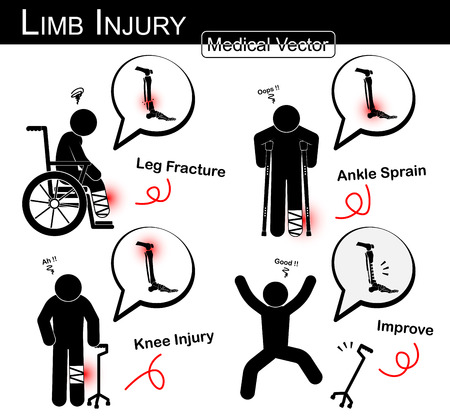1. Understanding Parkinson’s Disease and Its Impact on Mobility
Parkinson’s Disease (PD) is a progressive neurological disorder that affects movement and muscle control. It is estimated that nearly one million people in the United States are living with Parkinson’s, making it a significant health concern nationwide. Understanding the basics of PD is crucial for exploring new ways to support patients, especially when it comes to improving mobility and exercise routines.
Causes and Symptoms of Parkinson’s Disease
The exact cause of Parkinson’s Disease remains unknown, but researchers believe it results from a combination of genetic and environmental factors. The disease primarily affects nerve cells in the brain that produce dopamine, a chemical messenger essential for smooth, coordinated movement. As these cells deteriorate, dopamine levels drop, leading to a range of symptoms.
Main Symptoms Associated with Parkinson’s Disease
| Symptom | Description |
|---|---|
| Tremors | Shaking, often starting in the hands or fingers |
| Bradykinesia | Slowness of movement, making daily tasks harder |
| Muscle Rigidity | Stiffness in limbs and trunk, limiting flexibility |
| Postural Instability | Impaired balance and coordination, increasing fall risk |
Mobility Challenges Faced by Parkinson’s Patients in the U.S.
Everyday life can be tough for those living with Parkinson’s Disease. Many patients struggle with simple activities like walking, getting out of bed, or rising from a chair. These mobility challenges can lead to frustration and a loss of independence. In American communities, where driving and walking are vital for daily living, these issues become even more pronounced.
Common Daily Struggles Reported by U.S. Patients
- Difficulty navigating public spaces: Crowded sidewalks, uneven surfaces, and lack of accessible transport can make outings stressful.
- Trouble with household tasks: Chores like cooking or cleaning may require extra time or assistance.
- Increased fall risk: Falls are a leading cause of injury among older adults with PD in the U.S., often resulting in hospital stays.
- Social isolation: Mobility issues can limit participation in family gatherings or community events.
- Anxiety about going out alone: Many patients worry about “freezing” (sudden inability to move) while outside their homes.
The Importance of Addressing Mobility Issues Early On
Tackling mobility challenges early is key to helping people with Parkinson’s maintain their quality of life and independence. Innovations in exercise and mobility training are vital tools in this effort, offering hope for better outcomes as research and technology advance.
2. The Latest Approaches in Exercise Therapy
Understanding Evidence-Based Exercise Programs
Exercise is now recognized as a crucial part of managing Parkinson’s disease (PD). Recent research highlights that specific types of exercise can help improve mobility, balance, and quality of life for people living with PD. Below, we review the main evidence-based exercise programs and how they are adapted to meet the needs of Parkinson’s patients in the United States.
Aerobic Training
Aerobic exercises, like walking, cycling, or swimming, have shown to enhance cardiovascular health and stamina. For PD patients, these activities are tailored to be low-impact and safe. Most programs recommend starting slow and gradually increasing intensity, often using treadmills or stationary bikes under supervision. Group classes or community-based walking clubs are popular in many American cities as they add a social element and boost motivation.
Resistance Training
Strength or resistance training helps combat muscle weakness and improves functional independence. Patients may use resistance bands, light weights, or even body-weight exercises. Trainers often design routines that focus on major muscle groups used in daily activities, such as standing up from a chair or climbing stairs. In the US, many rehabilitation centers offer specialized strength-training classes for Parkinson’s patients.
Balance and Flexibility Exercises
Falls are a major concern for people with PD. Balance exercises, including tai chi and yoga, help improve stability and flexibility. These programs are widely available at local YMCAs or community centers across America. Classes are adapted so movements are slow and controlled, reducing the risk of injury while enhancing confidence in movement.
Comparison of Common Exercise Methods for Parkinson’s Disease
| Type of Exercise | Main Benefits | How It’s Tailored for PD | Common Settings in the US |
|---|---|---|---|
| Aerobic (e.g., walking, cycling) | Improves heart health & endurance | Low-impact options; supervised sessions; gradual progression | Treadmill gyms, group walks, cycling classes |
| Resistance (strength) training | Builds muscle strength; aids daily function | Focus on safe techniques; uses bands/weights; functional movements | Rehab centers, fitness studios, home routines with guidance |
| Balance/Flexibility (e.g., tai chi, yoga) | Reduces fall risk; increases flexibility & stability | Modified poses/movements; small group sizes; focus on safety | Community centers, YMCAs, senior wellness programs |
The Importance of Individualization
No two Parkinson’s patients are exactly alike—exercise plans must be personalized based on symptoms, abilities, and goals. Physical therapists and trainers certified in neurological conditions work closely with individuals to adjust exercises as needed. Many insurance plans in the US now cover some therapy services if prescribed by a doctor.
![]()
3. Technology-Driven Mobility Solutions
Embracing Digital Tools in Parkinson’s Care
Across the United States, technology is making a big difference for people living with Parkinson’s disease. New digital tools are helping patients stay active and engaged in their care, no matter where they live. These innovations are especially important for those who may have trouble traveling to clinics or who want to manage their symptoms from home.
Wearable Sensors: Real-Time Feedback for Better Movement
Wearable sensors, like smartwatches and activity trackers, are becoming popular tools in mobility training. They can monitor walking patterns, tremors, balance, and even remind patients when it’s time to exercise. The real-time feedback helps both patients and therapists track progress and make quick adjustments to exercise plans.
| Type of Device | Main Function | Benefit for Patients |
|---|---|---|
| Smartwatch | Tracks steps, heart rate, movement patterns | Motivates daily activity and monitors symptoms |
| Balance Sensor | Measures posture and stability during movement | Helps prevent falls by alerting to risky movements |
| Home Exercise Tracker | Logs completed exercises and gives reminders | Keeps patients on track with their rehab plan |
Tele-Rehabilitation: Therapy Without Borders
Tele-rehabilitation platforms let patients connect with physical therapists through secure video calls. This means high-quality care can happen anywhere—at home, in rural areas, or even while traveling. Therapists can guide patients through custom exercises, watch their form, and adjust routines in real time. Families often join these sessions to support their loved ones and learn how to help between appointments.
Key Benefits of Tele-Rehabilitation:
- Convenience: No need to travel long distances for therapy sessions.
- Personalized Care: Therapists can see the patient’s home environment and tailor advice accordingly.
- Ongoing Motivation: Regular check-ins keep patients motivated and accountable.
- Cultural Fit: Sessions can fit around work schedules or family life, which is important in many American households.
The Future of Tech-Driven Parkinson’s Rehab in the U.S.
The adoption of these digital solutions is transforming how Parkinson’s disease is managed across the country. As more Americans gain access to wearable sensors and tele-rehab services, staying active and independent becomes much easier—even when faced with mobility challenges.
4. Community-Based Innovations and Support Programs
Across the United States, community-based initiatives have become a vital part of exercise and mobility training for people living with Parkinson’s disease. These programs not only encourage physical activity but also provide social support and motivation, making exercise a more enjoyable and sustainable experience.
Group Exercise Classes
Many local community centers, YMCAs, and senior centers now offer specialized group exercise classes designed specifically for Parkinson’s patients. These classes may include tailored stretching routines, balance training, and strength exercises that address common challenges faced by individuals with Parkinson’s disease. Group settings help participants stay motivated, share experiences, and build lasting friendships.
Boxing Clubs for Parkinson’s
Boxing-inspired fitness programs like Rock Steady Boxing have become increasingly popular in the U.S. for people with Parkinson’s disease. These non-contact classes focus on agility, coordination, footwork, and strength. The dynamic nature of boxing drills can improve both physical abilities and confidence, while the group atmosphere fosters camaraderie and accountability.
Parkinson’s Wellness Groups
Parkinson’s wellness groups often combine exercise sessions with educational workshops and peer support meetings. Organizations like the Parkinson’s Foundation or local support networks frequently host wellness days that include yoga, dance therapy (such as “Dance for PD”), tai chi, or walking clubs. These programs emphasize holistic health—addressing both body and mind—and help reduce feelings of isolation.
Popular Community-Based Programs in the U.S.
| Program Type | Description | Common Locations |
|---|---|---|
| Group Exercise Classes | Structured routines focusing on flexibility, balance, and strength for all abilities | Community centers, senior centers, gyms |
| Boxing Clubs (e.g., Rock Steady Boxing) | Non-contact boxing workouts to improve coordination and stamina | Fitness clubs, specialized boxing gyms |
| Wellness Groups & Support Networks | Exercise plus educational resources and peer support | Parks, libraries, nonprofit organizations |
| Dance Therapy (Dance for PD) | Dancing to enhance mobility and self-expression | Theaters, studios, recreation centers |
| Tai Chi & Yoga Classes | Meditative movement to boost balance and mental well-being | Parks, community halls, health clubs |
The Importance of Social Connection
Participating in these community-based programs helps people with Parkinson’s disease stay active while building a network of friends who understand their journey. The combination of physical benefits and emotional encouragement makes these American initiatives an essential part of modern Parkinson’s care.
5. Future Directions and Patient-Centered Care
Personalized Interventions: Tailoring Programs for Each Individual
No two people with Parkinson’s Disease (PD) are the same, so exercise and mobility training should reflect each person’s unique needs, preferences, and abilities. New trends in care focus on personalized interventions, meaning that therapists and trainers create exercise plans based on the patient’s symptoms, stage of disease, and personal goals. This approach helps patients stay motivated and engaged while maximizing their progress.
| Traditional Approach | Personalized Approach |
|---|---|
| General group classes | Custom routines based on individual needs |
| One-size-fits-all exercises | Adjusting intensity and type of activity |
| Minimal patient input | Patient feedback shapes program design |
Integrative Wellness: Beyond Physical Exercise
Innovative care for PD now looks at the whole person—not just movement issues. Integrative wellness combines physical exercises with other therapies like mindfulness, nutrition counseling, and social activities. These programs may offer yoga, tai chi, or meditation sessions alongside balance and strength training. The goal is to improve not only mobility but also mental health, stress levels, and overall quality of life.
Key Elements of Integrative Wellness Programs:
- Mind-body practices (yoga, tai chi)
- Nutritional support
- Counseling for emotional well-being
- Group activities for social connection
Collaborative Care Models: Working as a Team
A team-based approach is becoming more common in Parkinson’s care. Patients benefit from a network that includes neurologists, physical therapists, occupational therapists, speech-language pathologists, nutritionists, mental health counselors, and sometimes social workers. Regular communication among these professionals ensures that every aspect of a patient’s health is addressed.
The Collaborative Care Team Might Include:
- Neurologist: Manages medication and monitors disease progression
- Physical Therapist: Designs movement strategies and exercise programs
- Occupational Therapist: Helps with daily living skills and home modifications
- Mental Health Counselor: Supports emotional adjustment and coping skills
- Nutritionist: Advises on diet for energy and wellness
- Speech-Language Pathologist: Assists with communication or swallowing issues if needed
A Holistic View: Meeting Every Need of People Living with Parkinson’s Disease
The future of exercise and mobility training for PD emphasizes treating the whole person. By combining personalized programs, integrative wellness strategies, and collaborative care models, healthcare providers aim to help people with Parkinson’s live fuller lives—physically, mentally, and emotionally.

